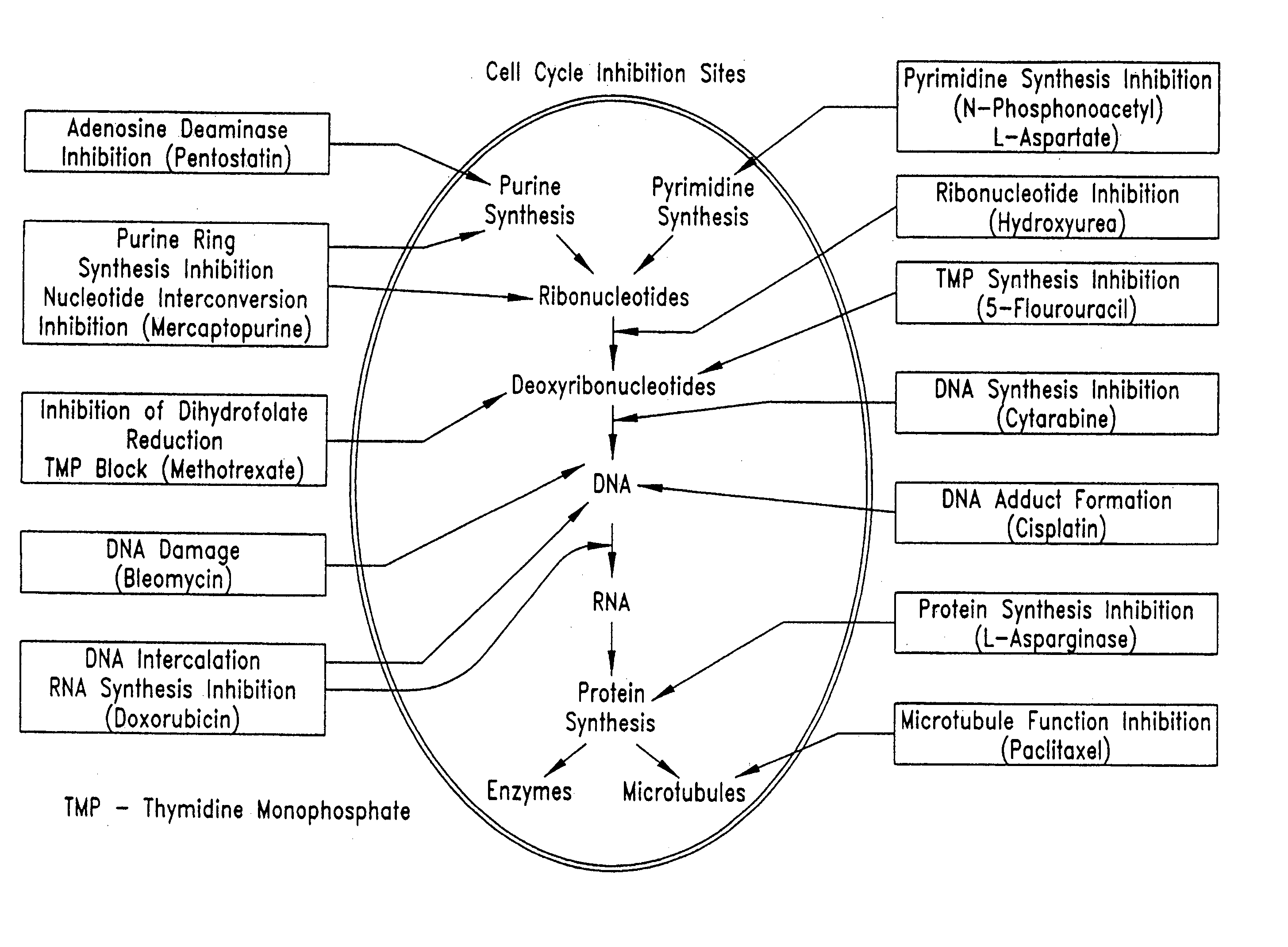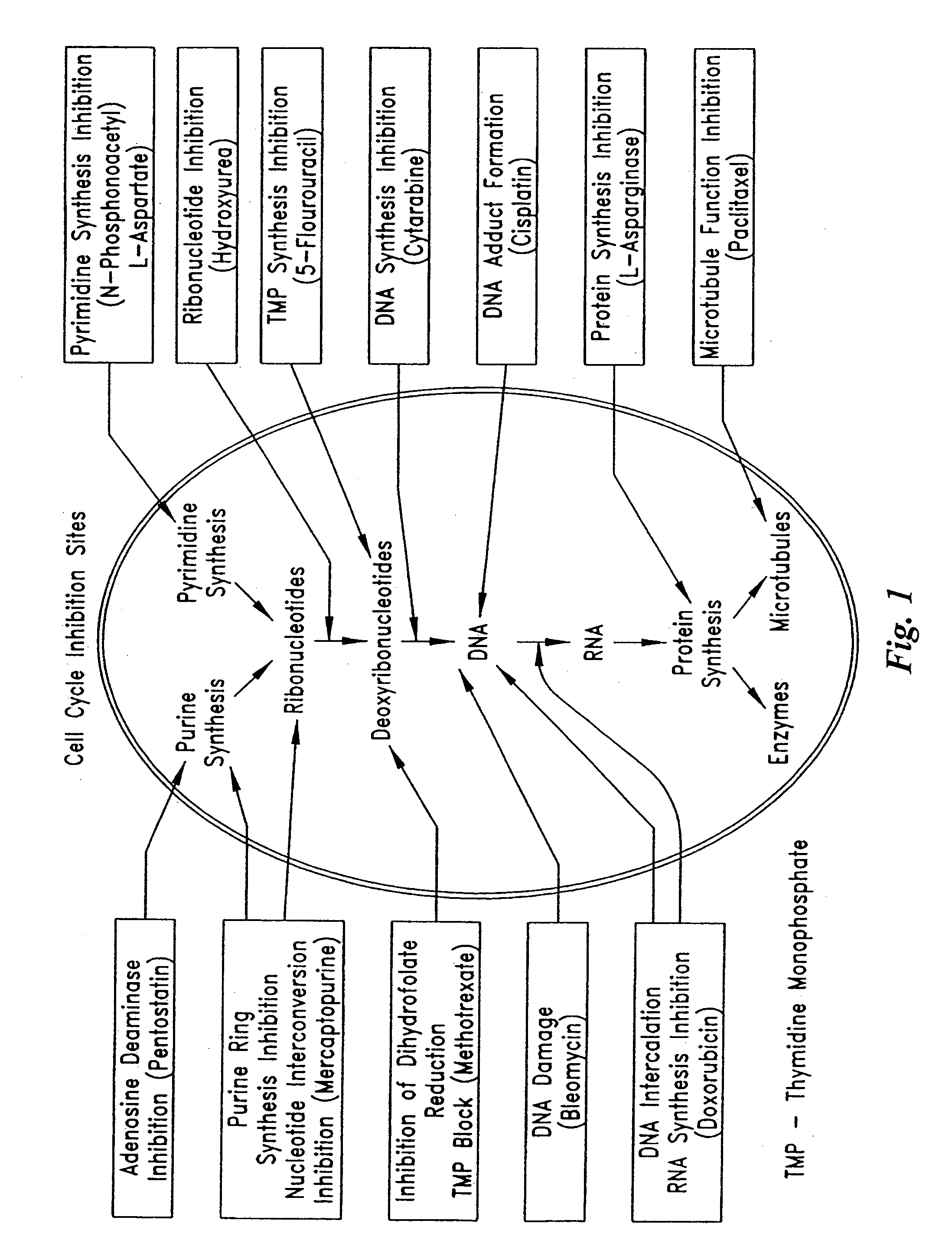Electrical devices and anti-scarring agents
a technology of electric devices and anti-scarring agents, which is applied in the field of pharmaceutical compositions, methods and devices, can solve the problems of shortening the battery life of implants, reducing the performance of implants, and reducing the clinical effectiveness of implants, so as to reduce the foreign body response to implantation, reduce the growth of reactive tissue, and enhance performance
- Summary
- Abstract
- Description
- Claims
- Application Information
AI Technical Summary
Benefits of technology
Problems solved by technology
Method used
Image
Examples
example 1
[1028] A metallic portion of an electrical device (e.g., a neurostimulator or an electrical lead) is washed by dipping it into HPLC grade isopropanol. A parylene primer layer (about 1 to 10 um) is deposited onto the cleaned electrical device using a parylene coater (e.g., PDS 2010 LABCOATER 2 from Cookson Electronics) and di-p-xylylene (PARYLENE N) or dichloro-di-p-xylylene (PARYLENE D) (both available from Specialty Coating Systems, Indianapolis, Ind.) as the coating feed material.
example 2
Paclitaxel Coating—Partial Coating
[1029] Paclitaxel solutions are prepared by dissolving paclitaxel (5 mg, 10 mg, 50 mg, 100 mg, 200 mg and 500 mg) in 5 ml HPLC grade THF. A coated portion of a parylene-coated device (as prepared in, e.g., Example 1) is dipped into a paclitaxel / THF solution. After a selected incubation time, the device is removed from the solution and dried in a forced air oven (50° C.). The device then is further dried in a vacuum oven overnight. The amount of paclitaxel used in each solution and the incubation time is varied such that the amount of paclitaxel coated onto the device is in the range of 0.06 μg / mm2 to 10 μg / mm2 (μg paclitaxel / mm2 of the device which is coated with paclitaxel after being placed in the THF / paclitaxel solution). The time during which the device is maintained in the paclitaxel / THF solution may be varied, where longer soak times generally provide for more paclitaxel to be adsorbed onto the device. In additional examples, one of the follo...
example 3
Paclitaxel Coating—Complete Coating
[1030] Paclitaxel solutions are prepared by dissolving paclitaxel (5 mg, 10 mg, 50 mg, 100 mg, 200 mg and 500 mg) in 5 ml HPLC grade THF. An entire parylene coated device (coated as in, e.g., Example 1) is then dipped into the paclitaxel / THF solution. After a selected incubation time, the device is removed and dried in a forced air oven (50° C.). The device is then further dried in a vacuum oven overnight. The amount of paclitaxel used in each solution and the incubation time is varied such that the amount of paclitaxel coated onto the device is in the range of 0.06 μg / mm2 to 10 μg / mm2. In additional examples, one of the following exemplary compounds may be used in lieu of paclitaxel: mitoxantrone, doxorubicin, epithilone B, etoposide, TAXOTERE, tubercidin, halifuginone, vinblastine, geldanamycin, simvastatin, sirolimus, everolimus, pimecrolimus, mycophenolic acid, 1-alpha-25 dihydroxy vitamin D3, Bay 11-7082, SB202190, mithramycin and sulconizole...
PUM
| Property | Measurement | Unit |
|---|---|---|
| Acidity | aaaaa | aaaaa |
| Deposition rate | aaaaa | aaaaa |
Abstract
Description
Claims
Application Information
 Login to View More
Login to View More - R&D
- Intellectual Property
- Life Sciences
- Materials
- Tech Scout
- Unparalleled Data Quality
- Higher Quality Content
- 60% Fewer Hallucinations
Browse by: Latest US Patents, China's latest patents, Technical Efficacy Thesaurus, Application Domain, Technology Topic, Popular Technical Reports.
© 2025 PatSnap. All rights reserved.Legal|Privacy policy|Modern Slavery Act Transparency Statement|Sitemap|About US| Contact US: help@patsnap.com



